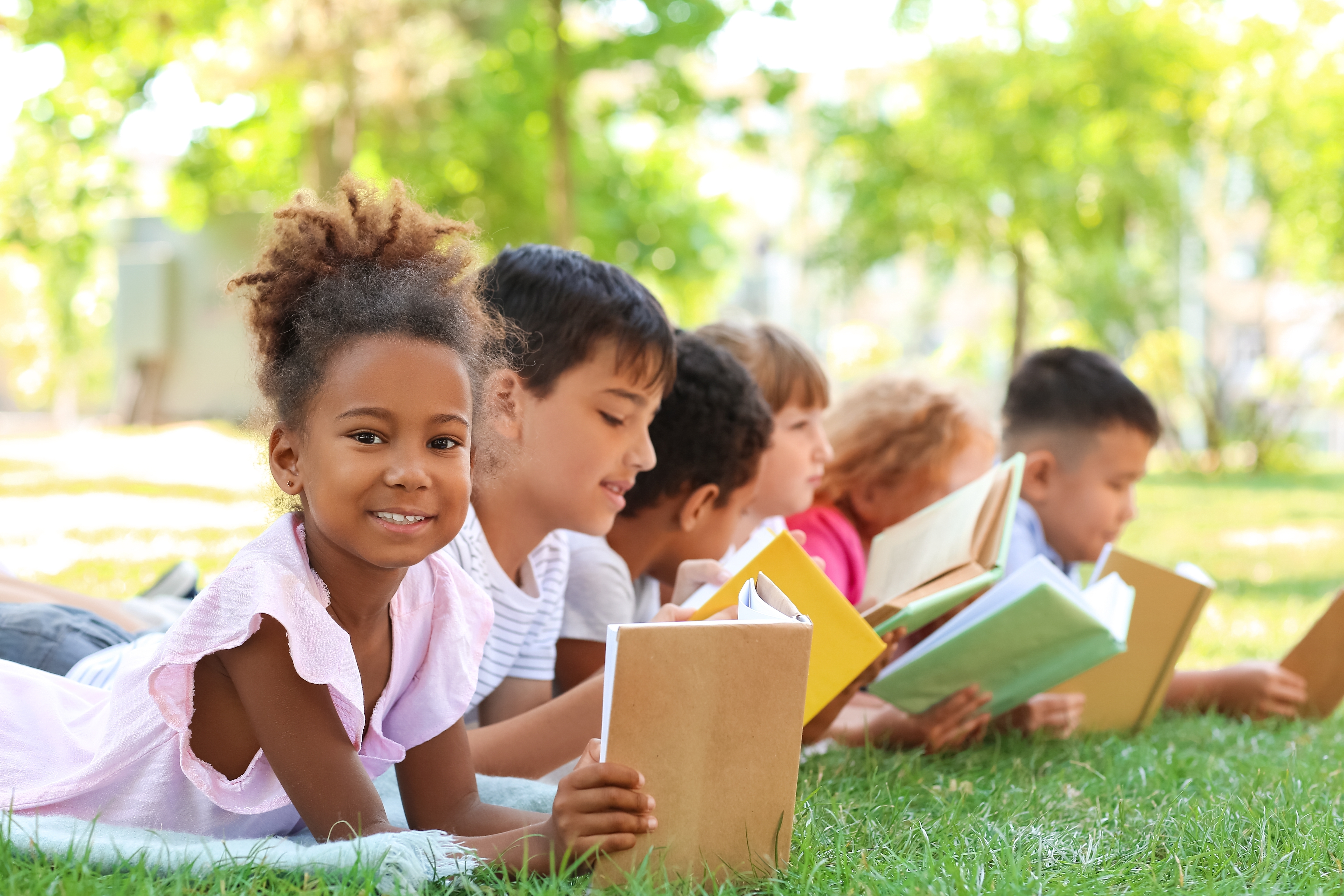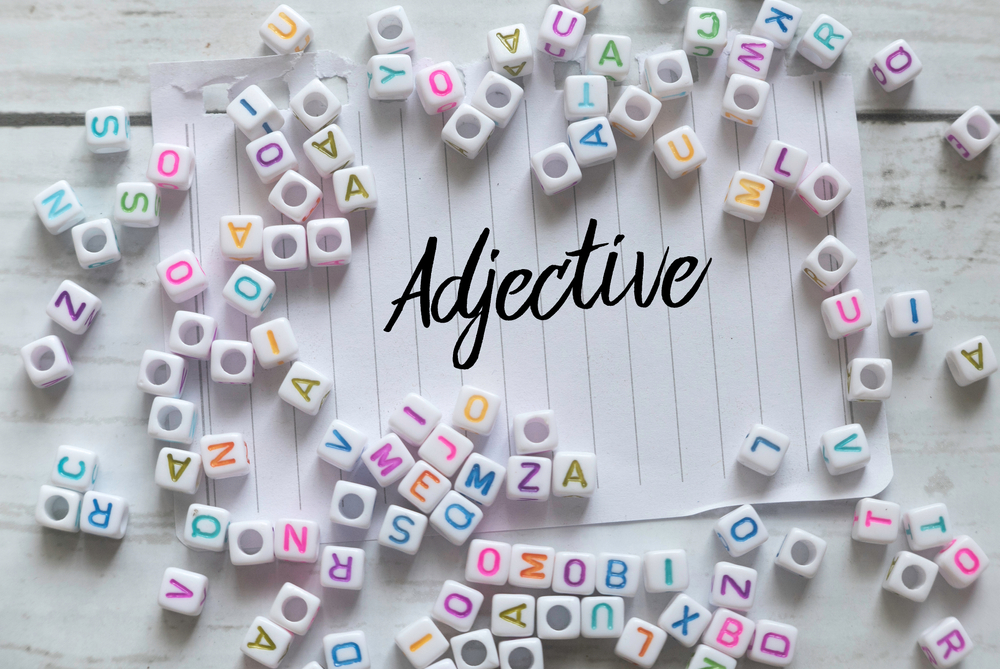Understanding opposites Worksheets for Ages 3-8
7 filtered results
-
From - To
Introduce your child to the world of opposites with our engaging worksheets designed for ages 3-8! These interactive activities from Kids Academy help young learners grasp essential concepts like big vs. small, hot vs. cold, and happy vs. sad. By using fun illustrations and simple exercises, our worksheets make learning opposites enjoyable and effective. Perfect for classroom or at-home use, they support cognitive growth and vocabulary expansion. Boost your child’s understanding of contrasting ideas and prepare them for more advanced language skills. Download today and watch your little one’s confidence soar as they master understanding opposites!
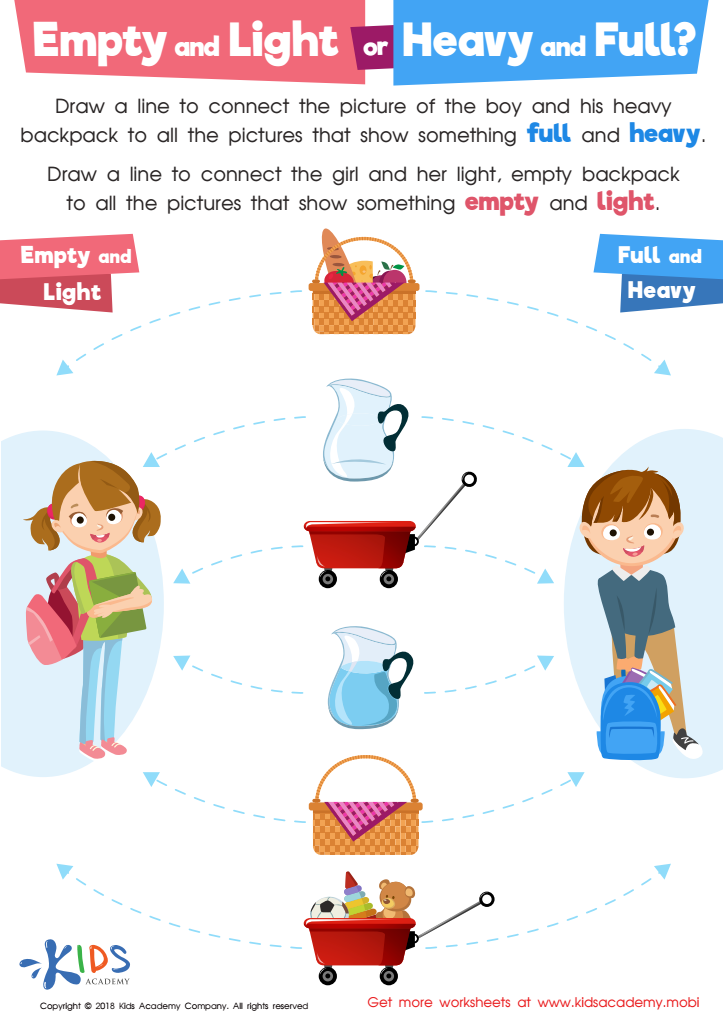

Empty and Light or Heavy and Full? Worksheet
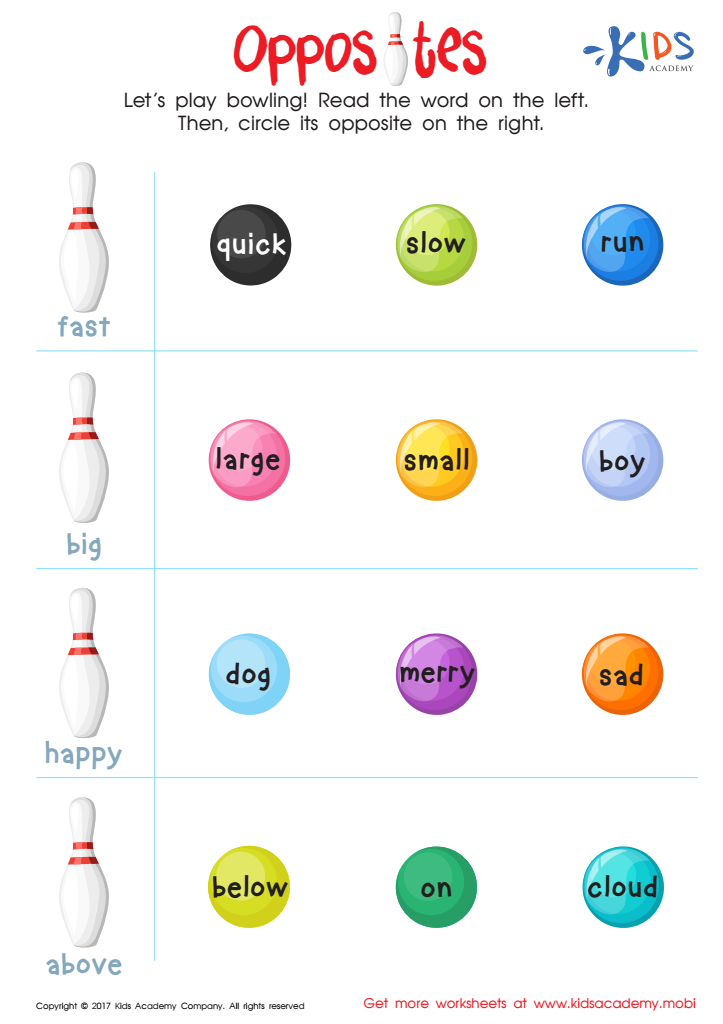

Opposites Worksheet
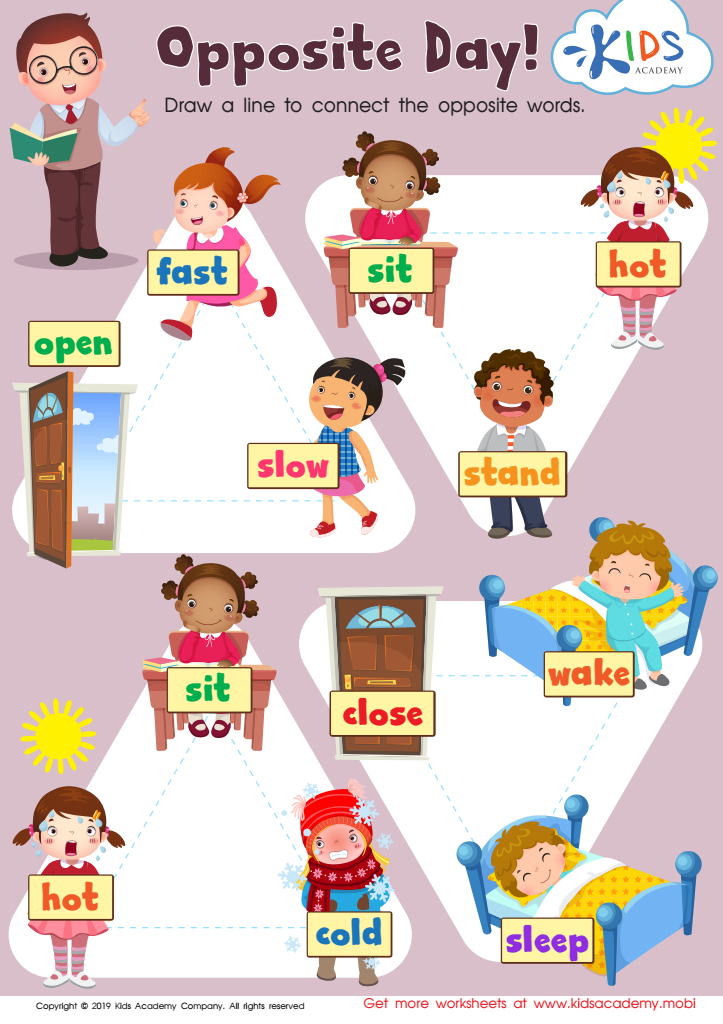

Opposite Day Worksheet
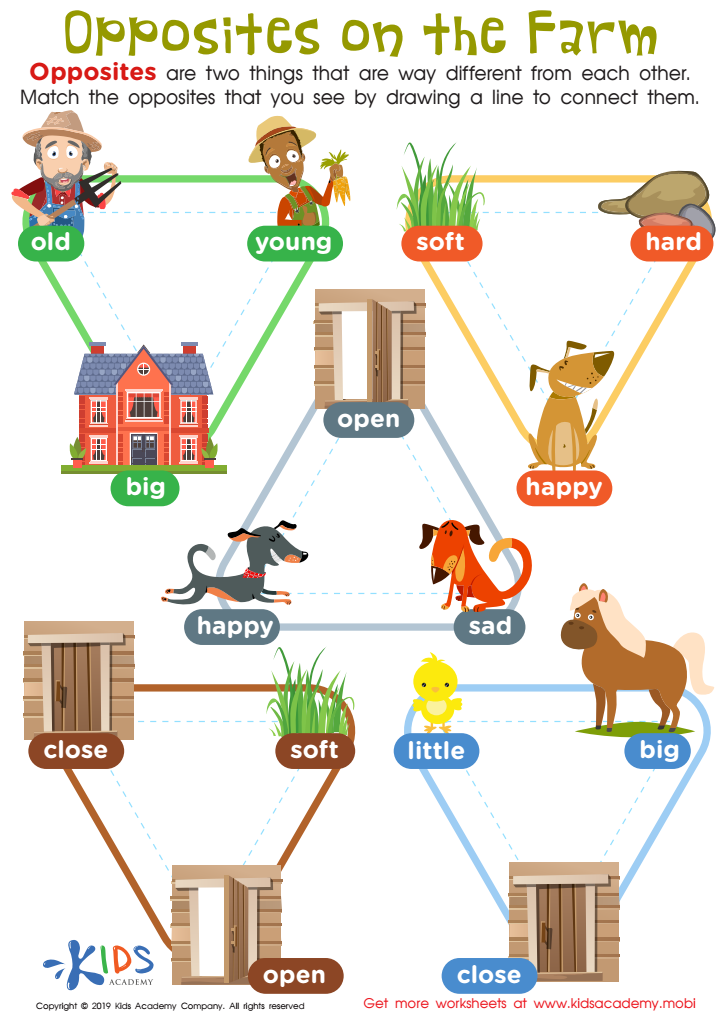

Opposites on the Farm Worksheet
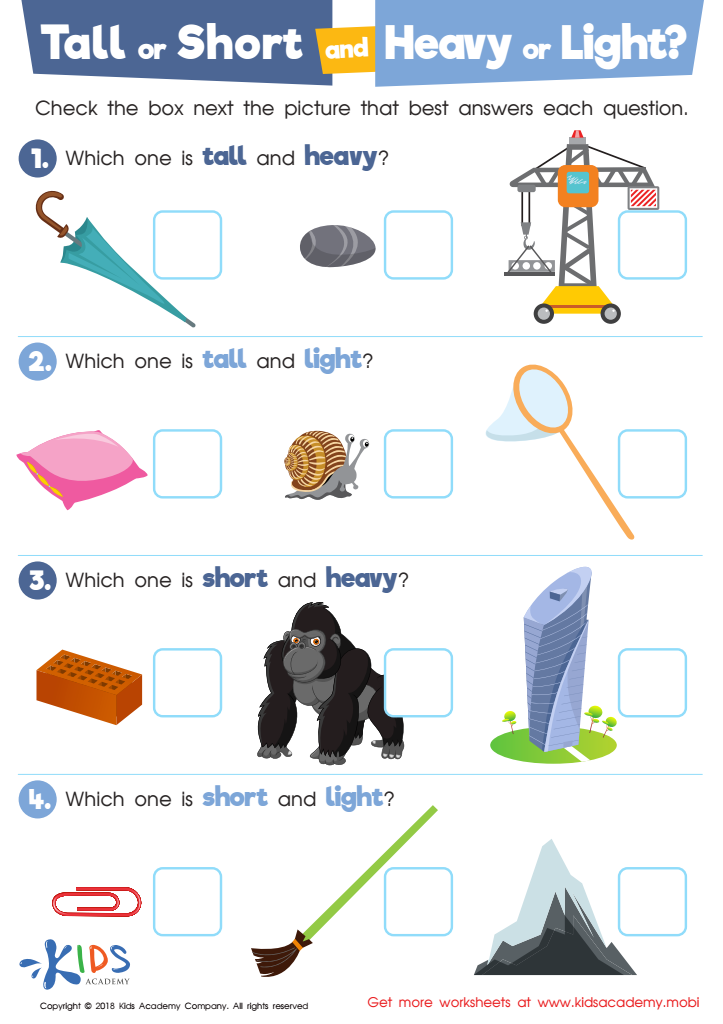

Tall or Short and Heavy or Light? Worksheet
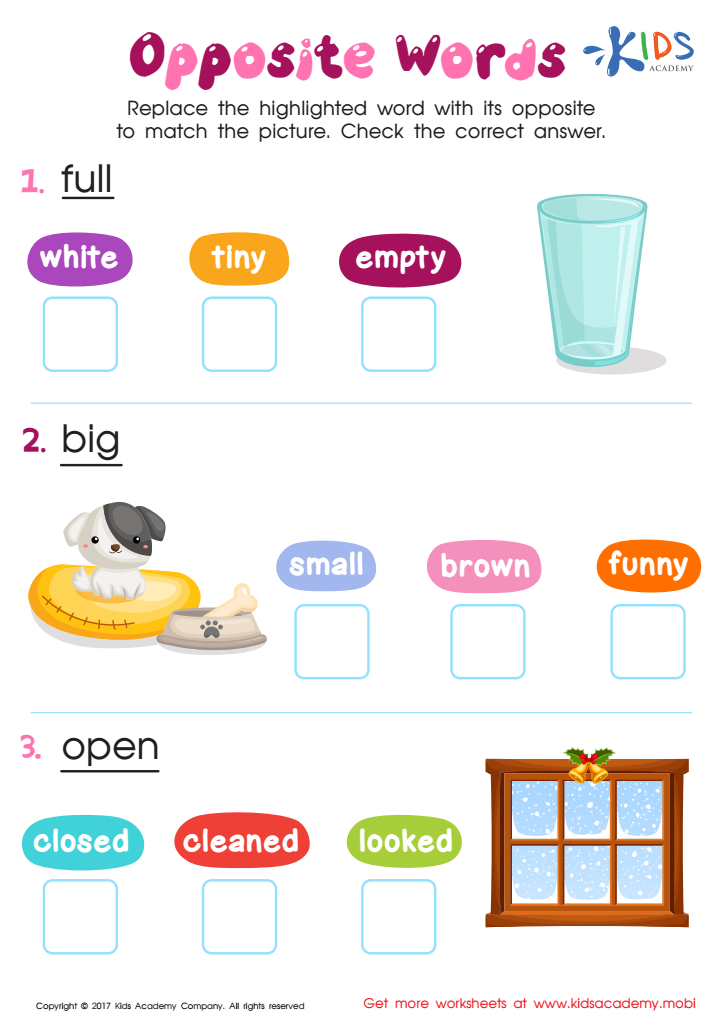

Opposite Words Worksheet
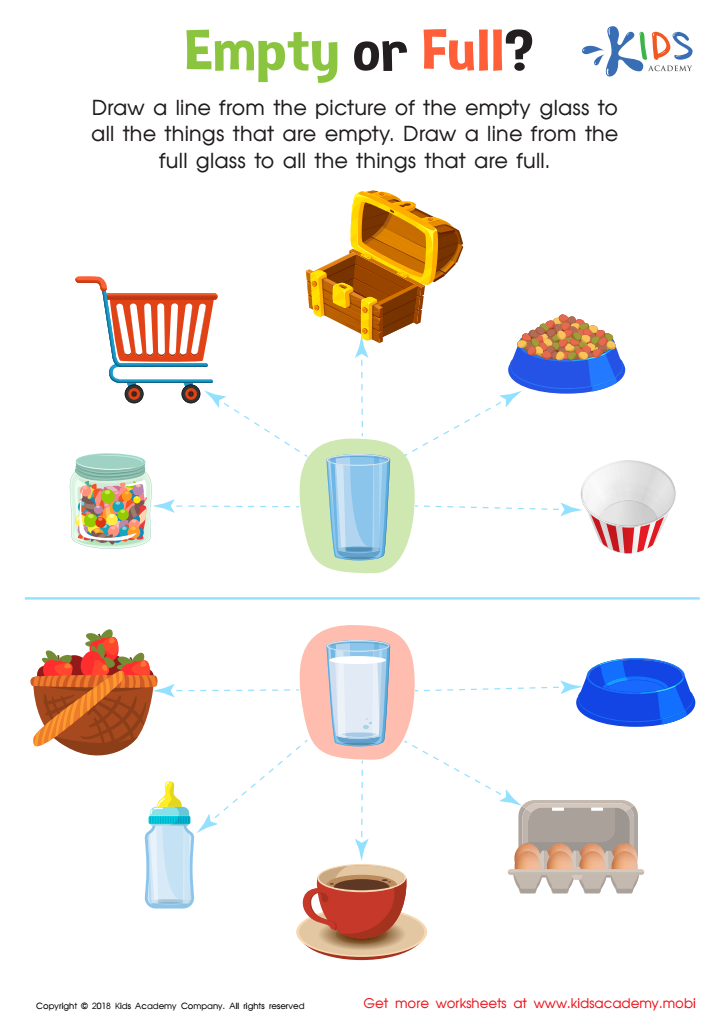

Empty or Full? Worksheet
Understanding opposites is fundamental to early childhood development and forms the basis for cognitive and language skills. For children aged 3-8, this concept helps hone their ability to compare and contrast, a crucial aspect of problem-solving and logical thinking. Grasping opposites enhances vocabulary, making communication more effective and enriching their expressive capabilities. When a child understands big vs. small, happy vs. sad, or up vs. down, they become better equipped to describe the world around them accurately.
For parents and teachers, recognizing the importance of opposites aids in constructing a relatable and engaging curriculum. It makes learning interactive and fun, which is particularly beneficial at this young age when children learn best through play and contrast. Activities that involve identifying opposites encourage critical thinking and observation skills, laying the groundwork for more complex academic concepts like math (big/small—understanding magnitude), reading comprehension (identifying character traits or plot points), and science (hot/cold—observations and experiments).
Moreover, understanding opposites aids emotional development. Children learn to discern and articulate their feelings better—happy vs. sad, excited vs. calm—which is vital for social interactions and emotional self-regulation. Hence, investing time and effort in teaching opposites is a developmental cornerstone, reinforcing broader educational outcomes.

 Assign to My Students
Assign to My Students





.jpg)
